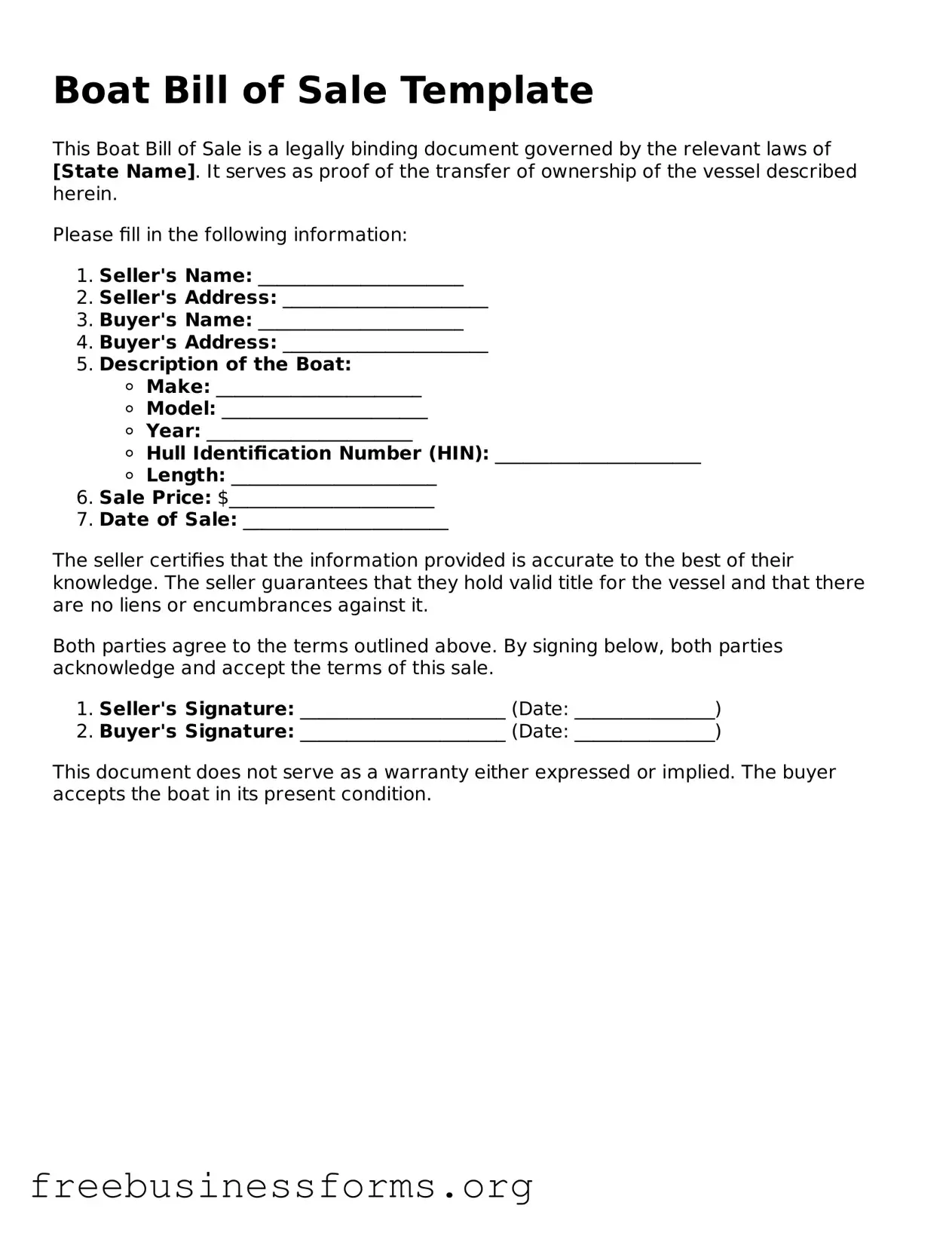Boat Bill of Sale Template
This Boat Bill of Sale is a legally binding document governed by the relevant laws of [State Name]. It serves as proof of the transfer of ownership of the vessel described herein.
Please fill in the following information:
- Seller's Name: ______________________
- Seller's Address: ______________________
- Buyer's Name: ______________________
- Buyer's Address: ______________________
- Description of the Boat:
- Make: ______________________
- Model: ______________________
- Year: ______________________
- Hull Identification Number (HIN): ______________________
- Length: ______________________
- Sale Price: $______________________
- Date of Sale: ______________________
The seller certifies that the information provided is accurate to the best of their knowledge. The seller guarantees that they hold valid title for the vessel and that there are no liens or encumbrances against it.
Both parties agree to the terms outlined above. By signing below, both parties acknowledge and accept the terms of this sale.
- Seller's Signature: ______________________ (Date: _______________)
- Buyer's Signature: ______________________ (Date: _______________)
This document does not serve as a warranty either expressed or implied. The buyer accepts the boat in its present condition.
